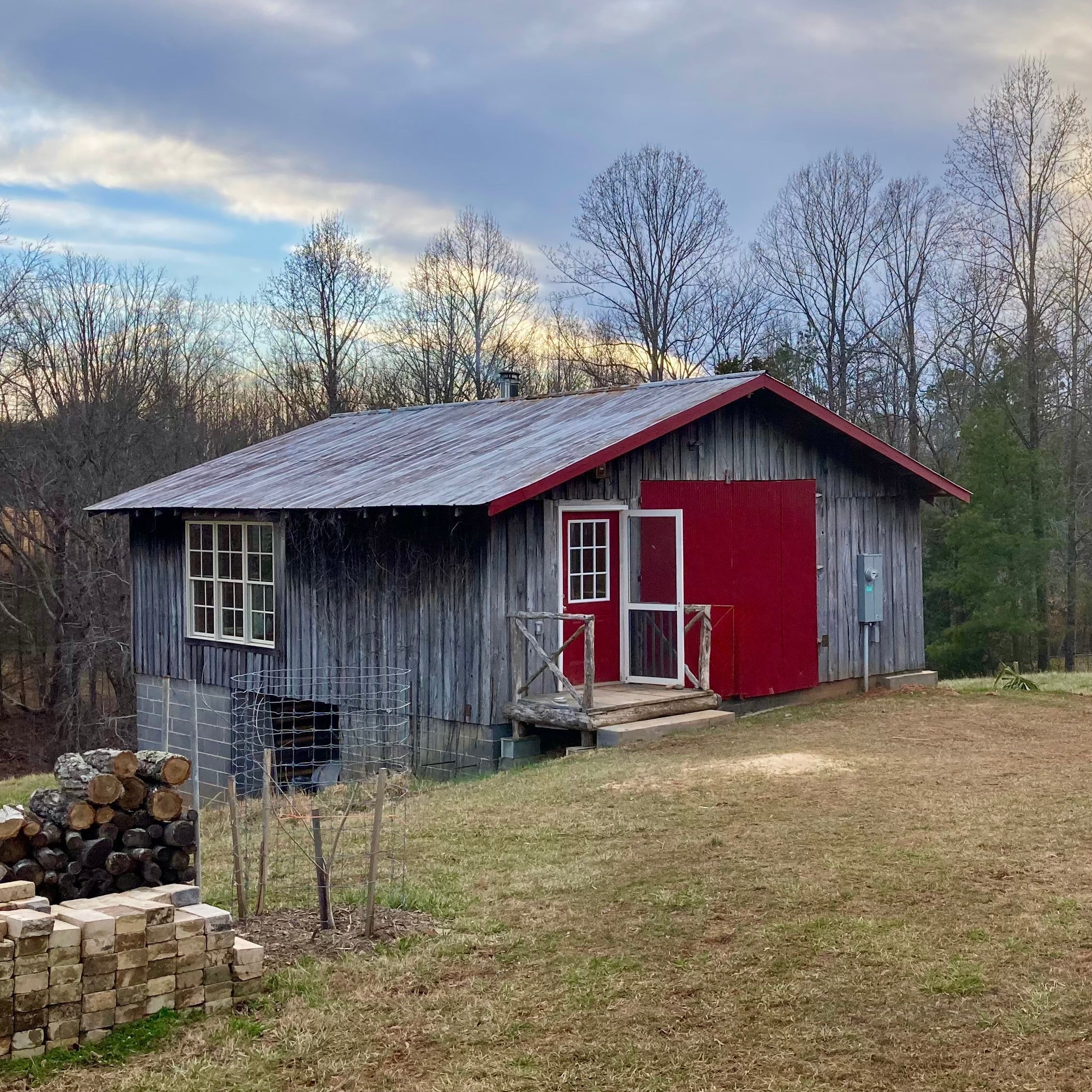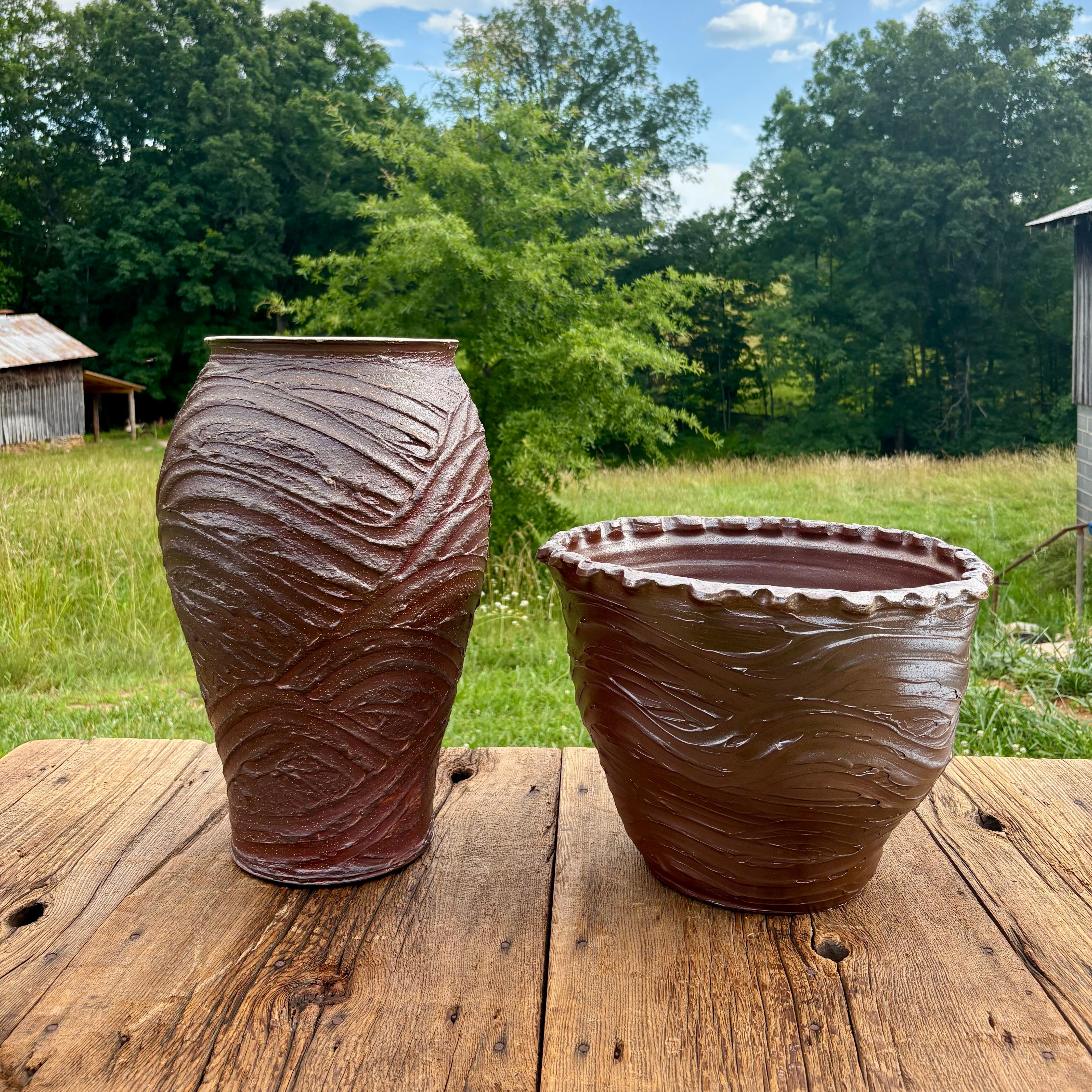From Earth to Art: The Journey of Handcrafted Pottery
There's something deeply satisfying about holding a handcrafted ceramic piece—the weight in your hands, the subtle textures beneath your fingertips, the intricacies of the glaze surface. Today, I'd like to take you behind the scenes of my Stokes County pottery studio to share the journey each piece takes from raw clay to the finished creation that finds its way to your home.
The Beginning: Selecting the Clay
Every piece begins with choosing the right clay body. Like a chef selecting ingredients, I consider what qualities I want the finished piece to have—durability, texture, color after firing. Each clay body has its own personality and demands different techniques. The stoneware I often work with provides a beautiful balance of strength and character, allowing me to create pieces that are both functional and expressive.
Centering: Finding Balance
The first step is to wedge the clay to remove air bubbles and homogenize the clay. After wedging, the clay is brought to the wheel. As the wheel spins, my hands bring the clay into alignment, this is called centering. When the clay is centered, work can begin. Until then, nothing else can happen.
Forming: Shaping With Intention
After the ball of clay is centered, I use gentle pressure from my thumbs to create an opening. I pull the walls up in a series of pulls usually, two or three for a cup or bowl form. Each pull raises the pot further upward, and during the later pulls I begin to shape the pot.
For the mugs and bowls in my everyday collection, I'm thinking about how they'll be used—the way a handle needs to support a full cup of coffee, how a bowl should nestle comfortably in your hands on a cold morning. I try to imagine how the pot will look after trimming, or with a handle or knob added, and even at this early stage I am imagining how it might be decorated and glazed.
Drying: The Patience Phase
Once shaped, each piece must dry slowly and evenly — a lesson in patience. If a piece dries unevenly it may warp or crack. or it may be at the wrong stage to trim or add a handle. I wait for a middle phase between wet and dry called leather hard. This intermediate stage is when I add handles to mugs, trim feet for bowls, or other functional elements that complete the design.
Bisque Firing: The First Transformation
When pieces are dry, they often take their first trip to the kiln. The bisque firing happens at around 1800°F (982°C), transforming the clay from a fragile, dusty material into a slightly more durable, porous ceramic that's ready to accept glaze.
Glazing: Adding the Palette
Glazing feels like halfway between magic and science. My glazes are formulations I've developed and refined, each containing minerals that melt, flow, and chemically react during firing to create colors and textures.
I often layer multiple glazes that interact during firing to create depth and variation. For most pieces, I dip or pour the glaze rather than brushing, looking for that perfect coating that will transform in the heat of the kiln. Some effects can't be fully controlled—crystalline formations or the way added flux from the flame interacts with a glaze, and embracing these elements of chance is part of what keeps ceramics exciting.
The Final Firing: Transformation by Fire
The glaze firing reaches temperatures around 2400°F (1260°C), turning the powdery glaze coating into glass and fully vitrifying the clay body. It's a dramatic transformation—one that feels a little like magic. I fire my kiln slowly, allowing the temperature to rise gradually over about 36 hours, then cool naturally for another three or so days before opening.
The Reveal: Meeting the Finished Pieces
Opening the kiln after the glaze firing is always a moment of anticipation. Sometimes pieces exceed my expectations, with glazes flowing and interacting in ways I couldn't fully predict. Other times, there are surprises—a glaze that ran too much, or colors that shifted unexpectedly due to how the kiln atmosphere affected the chemistry. Every firing teaches me something new.
From My Hands to Yours
The final step in a piece's journey is finding its home with you. When I pack up an order, I often find myself thinking about how these objects will integrate into someone's daily life—the morning coffee ritual in one of my mugs, a special meal served in one of my large bowls, flowers arranged in a vase I've shaped. There's an intimate connection formed, from my hands to yours, through these objects we share.
In a world increasingly filled with mass-produced items, handcrafted pottery offers a tangible connection to material, process, and maker. Each piece carries within it the story of its creation—the touch of hands, the transformation of fire, the decisions and accidents that make it unique.
Thank you for being part of this journey.
Sam Dougherty
Want to see more of my process? Follow along on Instagram @SamDoughertyPottery or browse available pieces at SamDoughertyPottery.com



